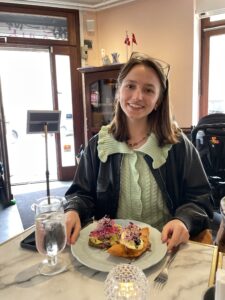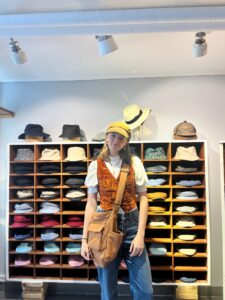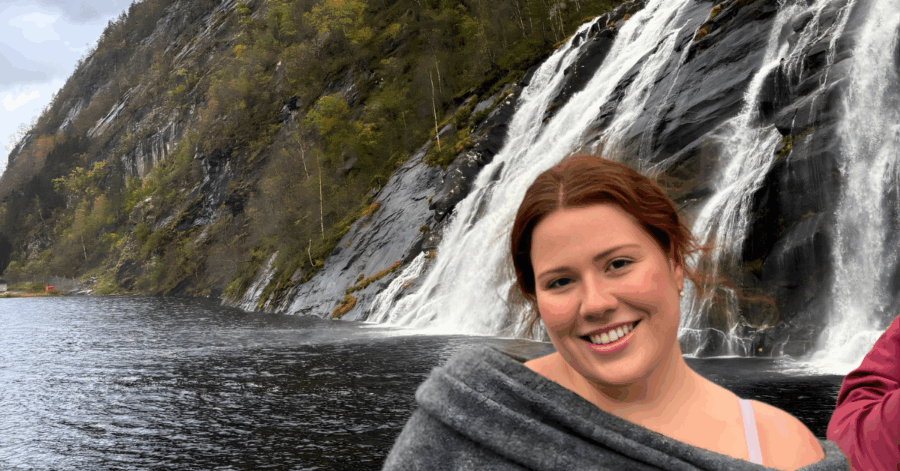
I find myself grasping for the right words to properly describe the brilliance of Copenhagen. The lush gardens and colorful buildings would lead you to believe it’s a fairytale written by the esteemed Hans Christian Andersen.
Simultaneously, the cutting-edge architecture in places like The Black Diamond (where I currently write) asserts the city as a hallmark of modern design. Venture through Christiansborg, Amalienborg or any of the stunning palaces, and you’ll feel the weight of the land’s history beneath your feet.
Childlike wonder meets age-old wisdom in this beautiful city. Different faces with different paces converge into a symphony of Danish livelihood. I’ve found that no matter what moment you’re living in, Copenhagen encourages you to live it fully — to savor each second and behold the present as a gift. What follows are some of my favorite experiences so far.
Shops and Sensibility

While abroad, our class has explored solutions to sustainability issues, specifically as they pertain to fashion. This exploration has allowed me to meet some remarkable individuals, including independent Danish designers like Nikolaj Storm, Caroline Hundsholt and Victoria Ladefoged.
Each of these creatives has their own unique style, but all share the same underlying passion for sincere practices. Although I’m not a fashion major, I’ve deeply appreciated the way they approach their craft to curtail waste.
One of the most memorable moments was our class visit to Wilgart, the last capmaker in Denmark. Keeping the candle lit on an old-fashioned craft, Silas Skram and Tomas Chovan work vigilantly to provide timeless, personal and high-quality hats. In a world punctuated by mass production and fickle purchases, I found their vocation incredibly noble.
Before me was a duo that prioritized cultivating personal connections between their creations and wearers. The pair described sustainability as a scale, not a black-and-white issue. I learned that brands can focus on various things like decreasing carbon footprint, ensuring social sustainability or curating conscious transportation. With these insights, it’s clear that Danish fashion is responsible.
Food for Thought
The Danes I’ve met throughout my studies are observant and compassionate. There’s little to no language barrier since most people in the city have been learning English from a young age. Additionally, the locals are enthusiastic to help students acclimate to Danish culture.
In my case, I’ve had some great culinary experiences. A few days ago, a kind deli worker helped me choose a “smørrebrød,” which translates to butter bread, an open-faced sandwich that is a staple of Danish cuisine. Foraged sprigs, fresh-caught fish and many other ingredients are piled high atop dense rye bread to create a delicious, locally-based bite.
The proper way to eat it is with a fork and knife, which means I must resist my American inclination to eat with my hands. When you visit Denmark, I highly recommend indulging in this slice of Scandinavia. Even without this dish, there’s a multitude of morsels to be enjoyed. The cinnamon and cardamom buns that decorate coffee shop display cases have revived me for my classes on numerous occasions. Furthermore, a “ristet pølse,” or hotdog, from any outdoor stands is sure to hit the spot; just make sure you get all the toppings.
New Friends, Old Sights

My explorations throughout the city have been punctuated by the joy and laughter I share with my classmates. Acclimating to this environment hasn’t been as daunting as I thought it would be, due to the amazing girls I’ve formed friendships with.
Our visit to The Round Tower, an old astronomical observatory, still lives in my mind. After paying the small fee of 40 kroners (a little less than $6 USD) to enter, our group had a pleasant time spiraling up the long ramp to reach the top. The view was phenomenal, and I was pleasantly surprised by the history waiting to be unraveled.
I learned more about the English bombardment of 1807, the use of the university observatory from the 1640s to 1861 and the astronomical contributions of Tycho Brahe and Ole Rømer. Furthermore, we got to go inside the adjacent Trinitatis Church to marvel at the stunning architecture and gilded decor. Seeing all this endorsed my passion for European history and gave me the opportunity to share knowledge with my newfound friends.
The feelings I’ve experienced in Copenhagen will always stay with me. The thrill of the Tivoli rollercoasters is stuck in my chest; the taste of smørrebrød clings to my tongue; the cobblestones of Vestergade guide my steps home and the echoes of church bells put me at ease. Studying abroad, with its many intricacies, has ironically illuminated the kinder characteristics of living that we often lose in our usual hustle and bustle.
I hope that wherever you are, you can find a moment to be present and comfortable with all that lies around. Copenhagen will be waiting patiently for you. “Tak,” or thanks for reading.
This post was contributed by Avery Thorpe, a Global Ambassador for May Term 2024. Avery is a sophomore advertising major studying abroad in Copenhagen, Denmark.





